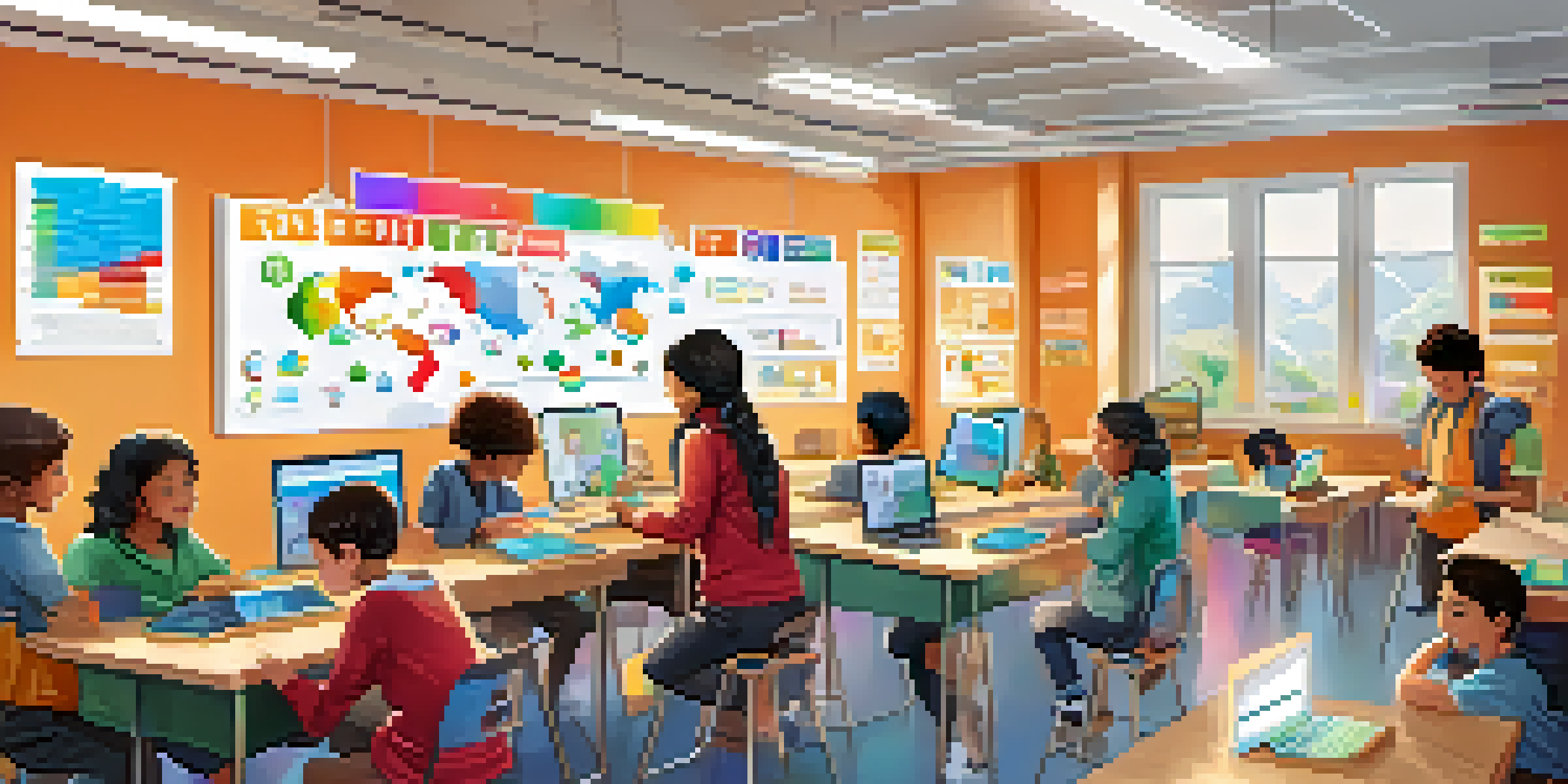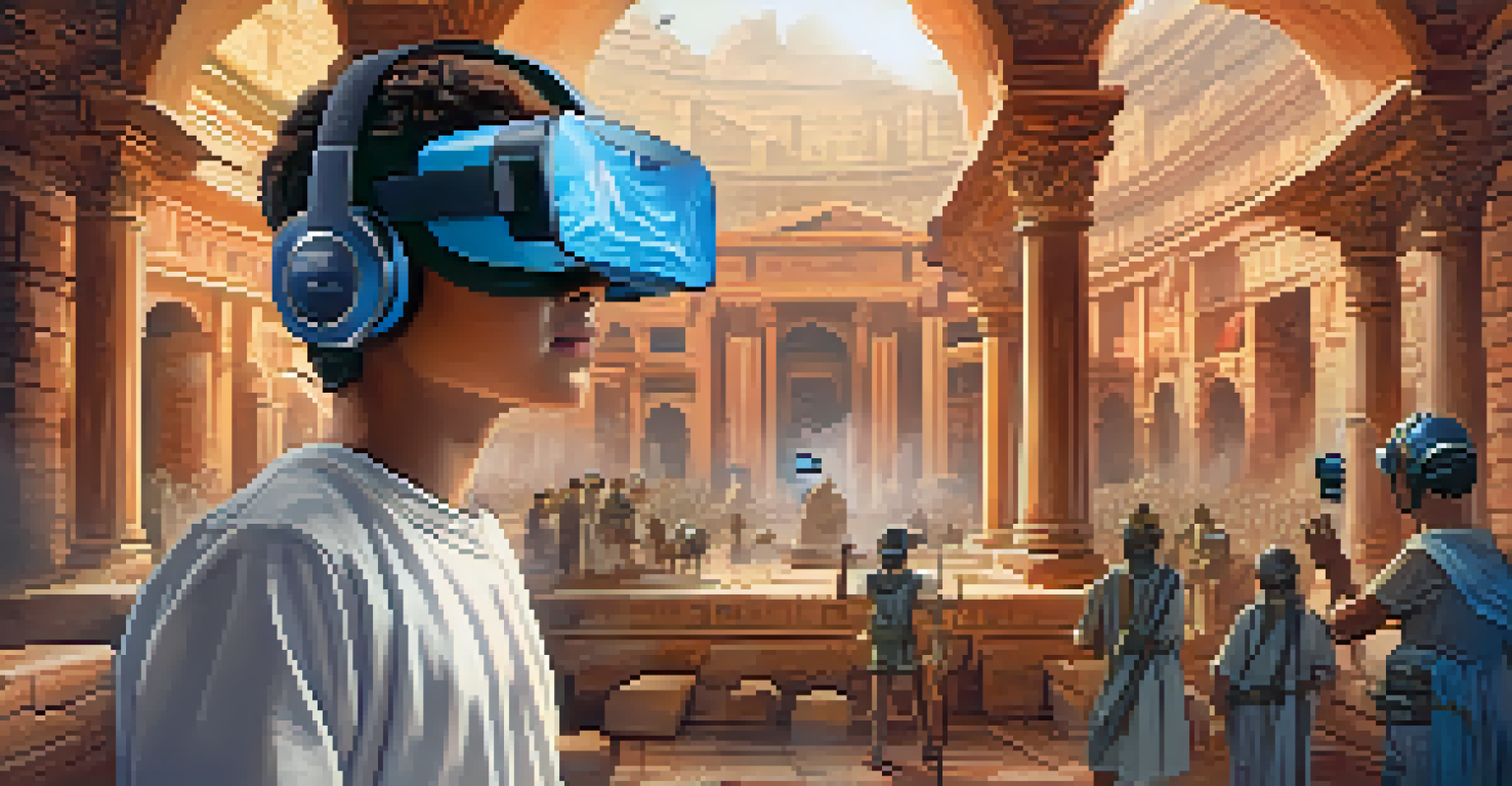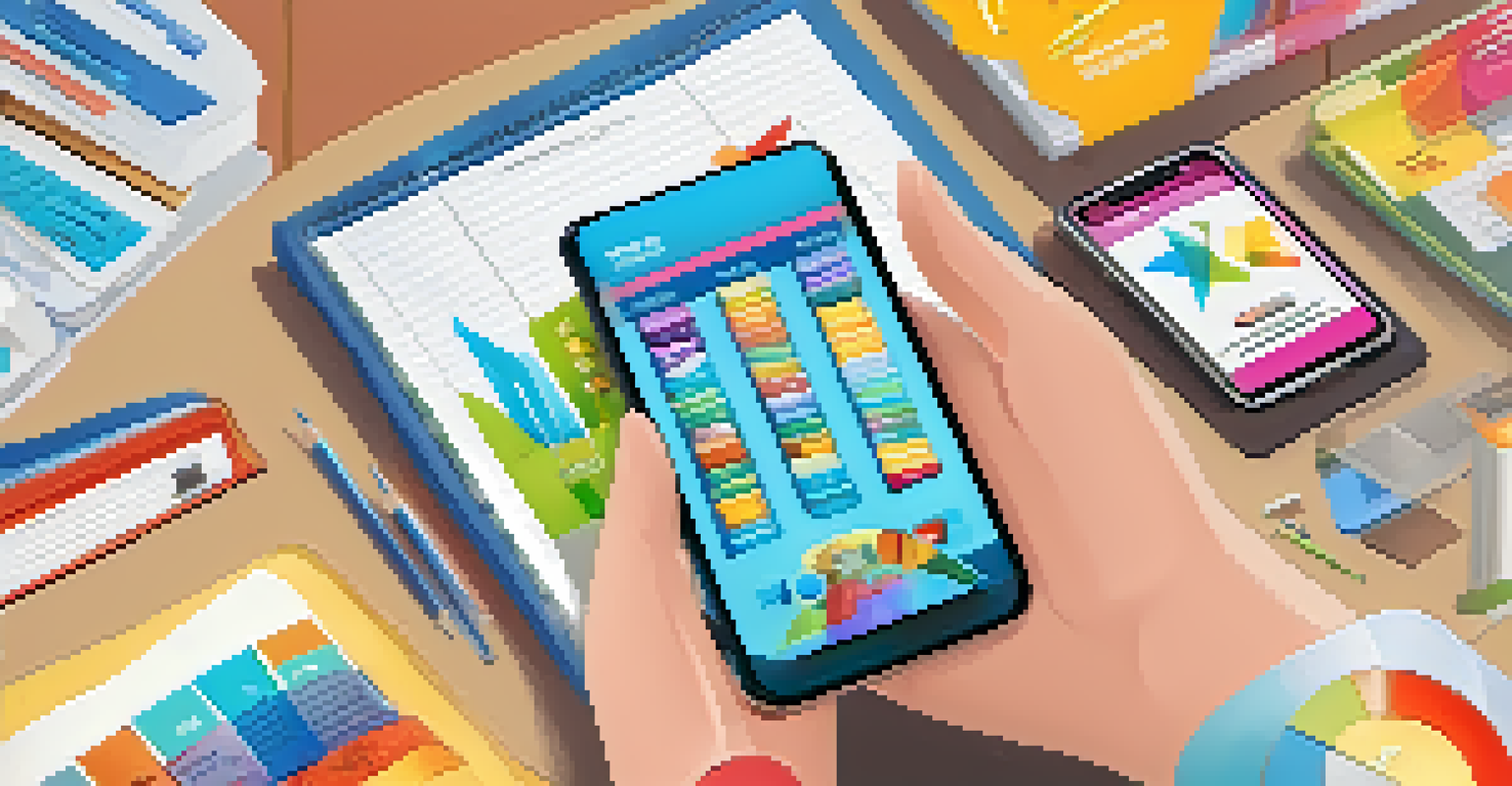The Future of Education: Trends in Gamification for Learning

Understanding Gamification in Education: A Game-Changer
Gamification in education refers to the integration of game elements into learning experiences. This approach aims to make learning more engaging and enjoyable by incorporating challenges, rewards, and competition. Picture a classroom where students earn badges for completing assignments, much like leveling up in a video game.
Gamification is a powerful tool that can enhance the learning experience by making it more engaging and enjoyable.
The concept doesn't just make learning fun; it also encourages active participation. When students are motivated by game-like elements, they are more likely to engage deeply with the material. This shift from passive to active learning can lead to better retention of information.
As technology advances, educators are finding innovative ways to apply gamification. From interactive quizzes to immersive simulations, the possibilities are vast and exciting, making education a more dynamic experience for students.
The Benefits of Gamification in Learning Environments
One of the most significant benefits of gamification is its ability to enhance motivation. By turning learning tasks into games, students often feel more inspired to participate. Imagine kids racing against the clock to complete math problems, all while having fun and feeling accomplished.

Moreover, gamification fosters a sense of achievement. As students progress and earn rewards, they experience a boost in self-confidence, which can be transformative. This newfound confidence can lead to a more positive attitude toward learning overall.
Gamification Boosts Student Engagement
By incorporating game elements into learning, students become more motivated and actively participate in their education.
Additionally, gamified learning promotes collaboration among students. Many educational games encourage teamwork, helping students develop essential social skills while they learn. This collaborative spirit can create a more supportive classroom environment.
Current Trends in Gamification for Education
As we look at the current landscape, several trends are shaping the future of gamification in education. For instance, the use of mobile apps and online platforms is on the rise, allowing students to learn anytime and anywhere. This flexibility mirrors how games are played in daily life, making education more accessible.
The only way to win is to learn faster than anyone else.
Another trend is the incorporation of augmented reality (AR) and virtual reality (VR) into educational games. These technologies create immersive experiences that can transport students to historical events or even outer space, enriching their learning process. Imagine exploring ancient ruins while learning about history through a VR headset!
Finally, personalized learning paths are becoming more common in gamified education. This means that students can progress at their own pace and choose challenges that align with their interests. Personalization not only enhances engagement but also caters to diverse learning styles.
Challenges and Limitations of Gamification in Education
Despite its many advantages, gamification is not without challenges. One major concern is the potential for overemphasis on rewards, which might lead to students focusing solely on earning points rather than genuinely learning. It's essential to strike a balance between fun and educational value.
Another limitation is the accessibility of technology. Not all students have equal access to devices or high-speed internet, which can create disparities in learning experiences. Educators must find ways to implement gamification that are inclusive and equitable for everyone.
Challenges in Gamified Education
Despite its benefits, gamification faces issues like overemphasis on rewards and unequal access to technology.
Lastly, some educators may lack the training or resources to effectively integrate gamification into their teaching. Professional development and support are crucial to empower teachers to use these tools effectively, ensuring that all students benefit.
Case Studies: Successful Gamification in Education
Several schools and organizations have successfully implemented gamification strategies. For example, ClassDojo has created a platform where teachers can reward students for positive behavior and academic achievements. This simple yet effective system has fostered a sense of community and motivation in classrooms around the world.
Another example is Duolingo, a language learning app that uses gamification to teach new languages. With its engaging interface, users earn points and unlock new levels as they progress, making language acquisition feel like a fun game rather than a chore.
These case studies illustrate that when gamification is thoughtfully integrated, it can lead to significant improvements in student engagement and learning outcomes. Schools that embrace these innovative methods often see higher levels of participation and enthusiasm.
The Role of Educators in Gamified Learning Environments
Educators play a pivotal role in the success of gamification in education. It's not just about introducing games; teachers must guide students in understanding the learning objectives behind each activity. This ensures that students recognize the educational value, not just the fun aspect.
Additionally, teachers can tailor gamification strategies to fit their classroom dynamics and student needs. By customizing challenges and rewards, educators can create a unique learning environment that resonates with their students. This level of personalization can enhance the overall effectiveness of gamified approaches.
Educators are Key to Success
Teachers play a crucial role in guiding students and tailoring gamified experiences to enhance learning outcomes.
Moreover, ongoing feedback is essential in gamified learning. Educators can foster a growth mindset by providing constructive feedback, encouraging students to learn from their mistakes and keep trying. This supportive atmosphere is crucial for maximizing the benefits of gamification.
The Future of Gamification in Education: What's Next?
Looking ahead, the future of gamification in education appears promising. As technology continues to evolve, we can expect even more innovative solutions that enhance learning experiences. For instance, AI-driven platforms may provide personalized learning experiences tailored to individual student needs.
Furthermore, the integration of social media into gamified learning could foster collaboration and communication among students. Imagine students sharing their achievements and challenges on a class platform, encouraging one another along the way.

Ultimately, the goal is to create a holistic learning environment where students are motivated, engaged, and empowered. By harnessing the power of gamification, educators can cultivate a love for learning that lasts a lifetime, shaping the future of education for generations to come.